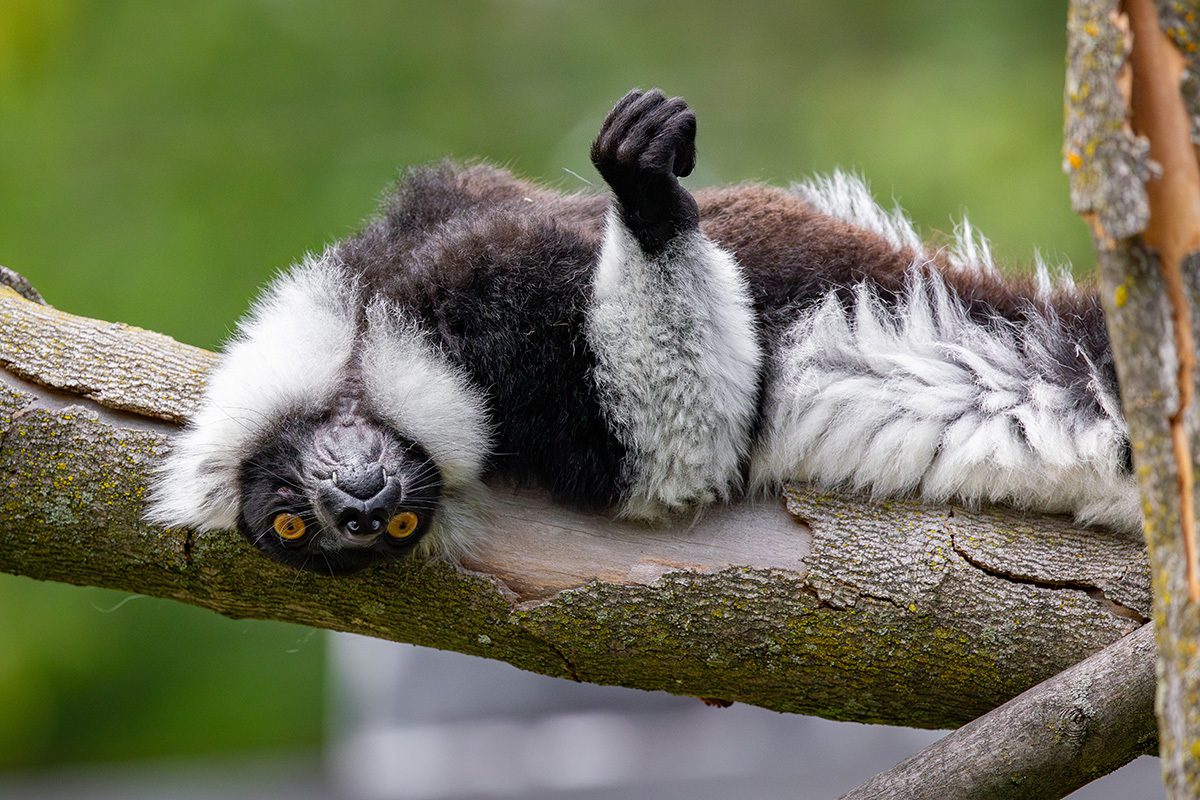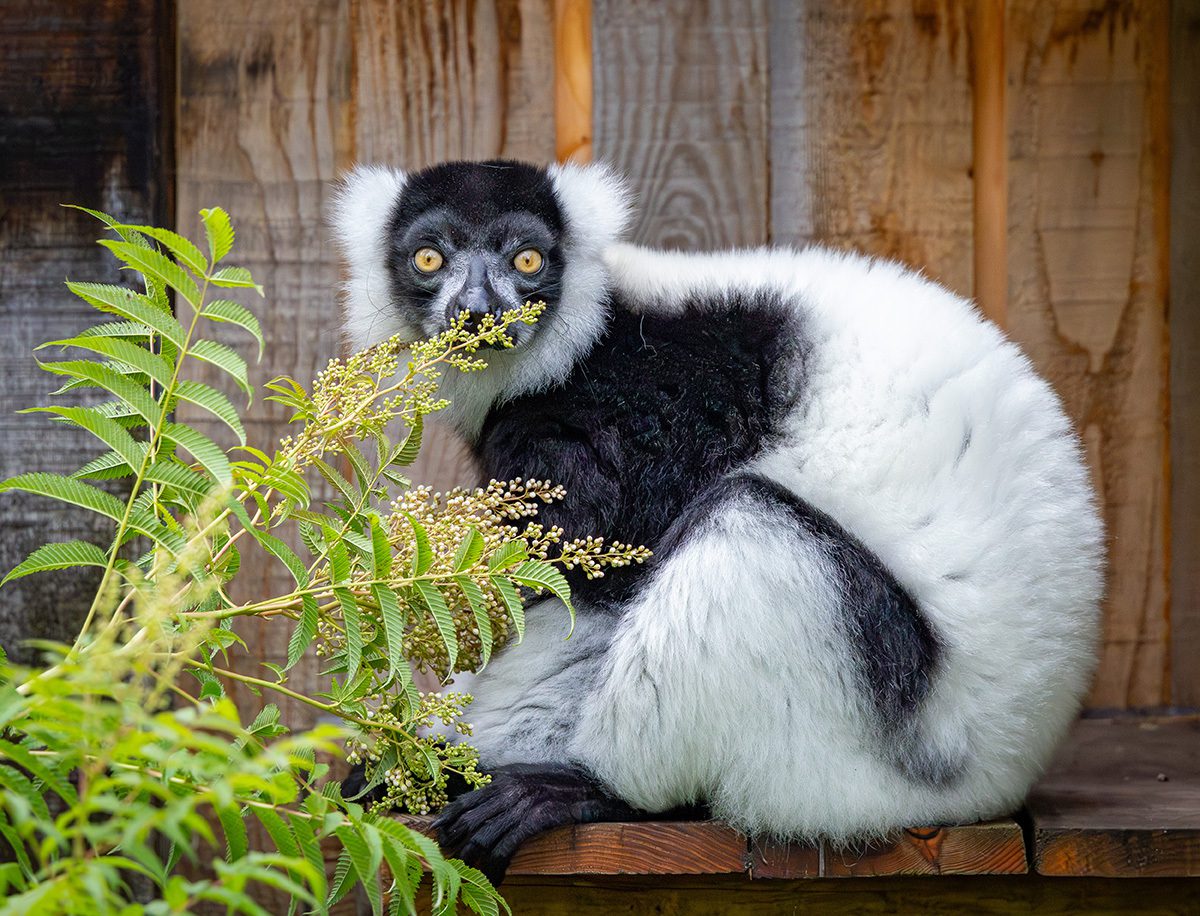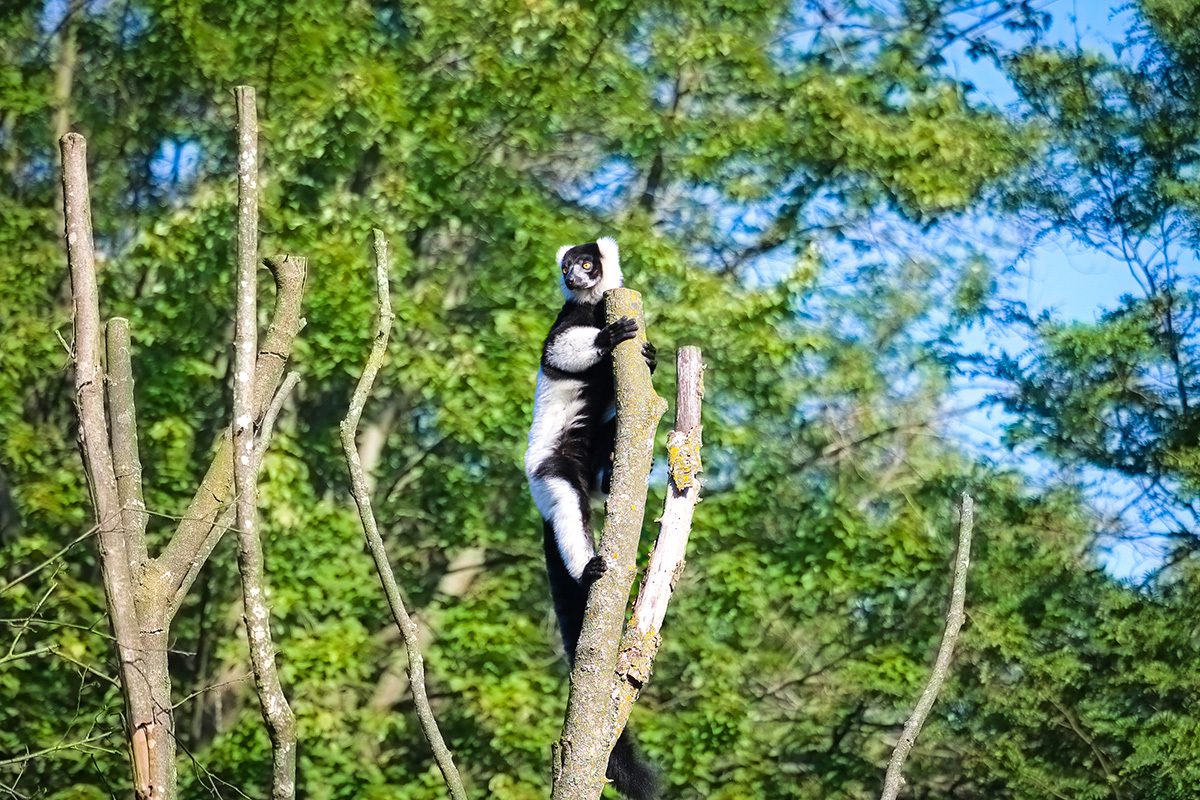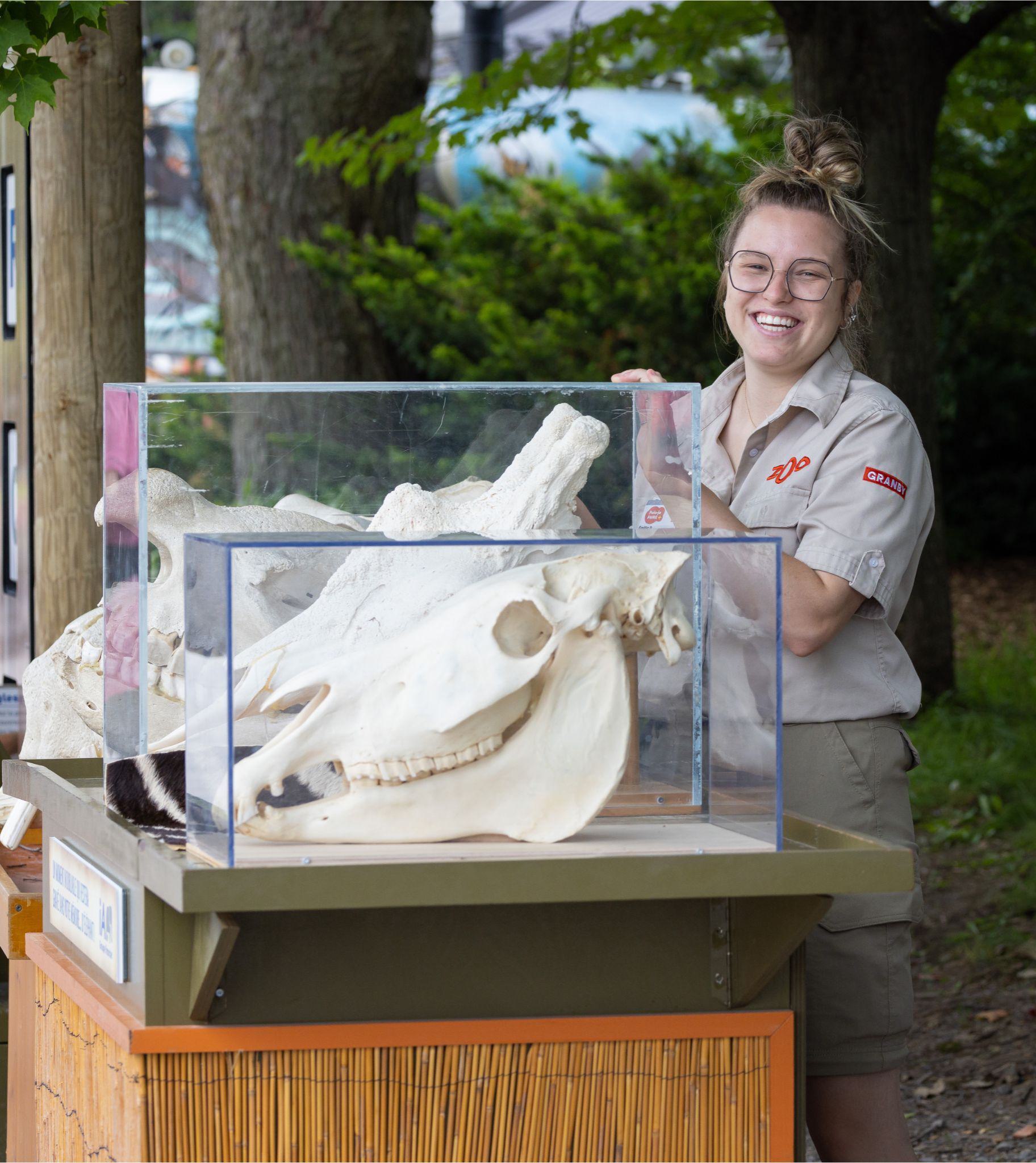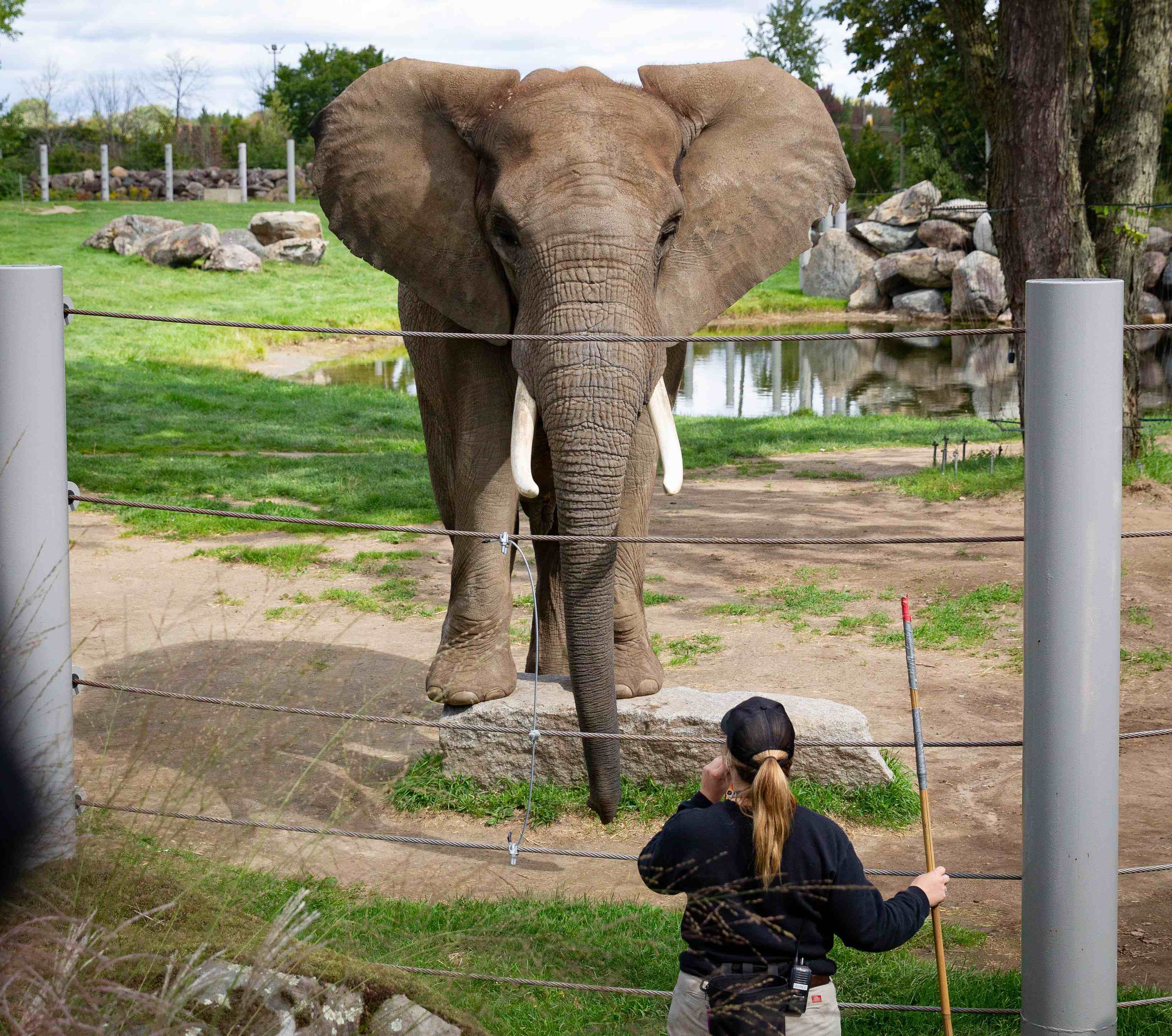A brand-new species makes its public debut at the Zoo!
Arriving simultaneously this past April from two different zoological institutions, black-and-white ruffed lemurs Ziggy and Ripley have officially completed their quarantine period just over ten days ago and have now moved into their new quarters. The next few days will be full of new experiences for them: not only are they gradually getting to know the island’s current residents, the ring-tailed lemurs, but they’re also discovering their outdoor habitat! It’s simply magical to watch them explore every blade of grass and begin to make this new place their home.
The arrival of this magnificent lemur species, listed as critically endangered, aligns perfectly with the Zoo’s commitment to increasing its impact on the conservation of threatened species. If all conditions are favorable, Ziggy and Ripley are expected to play a major role!
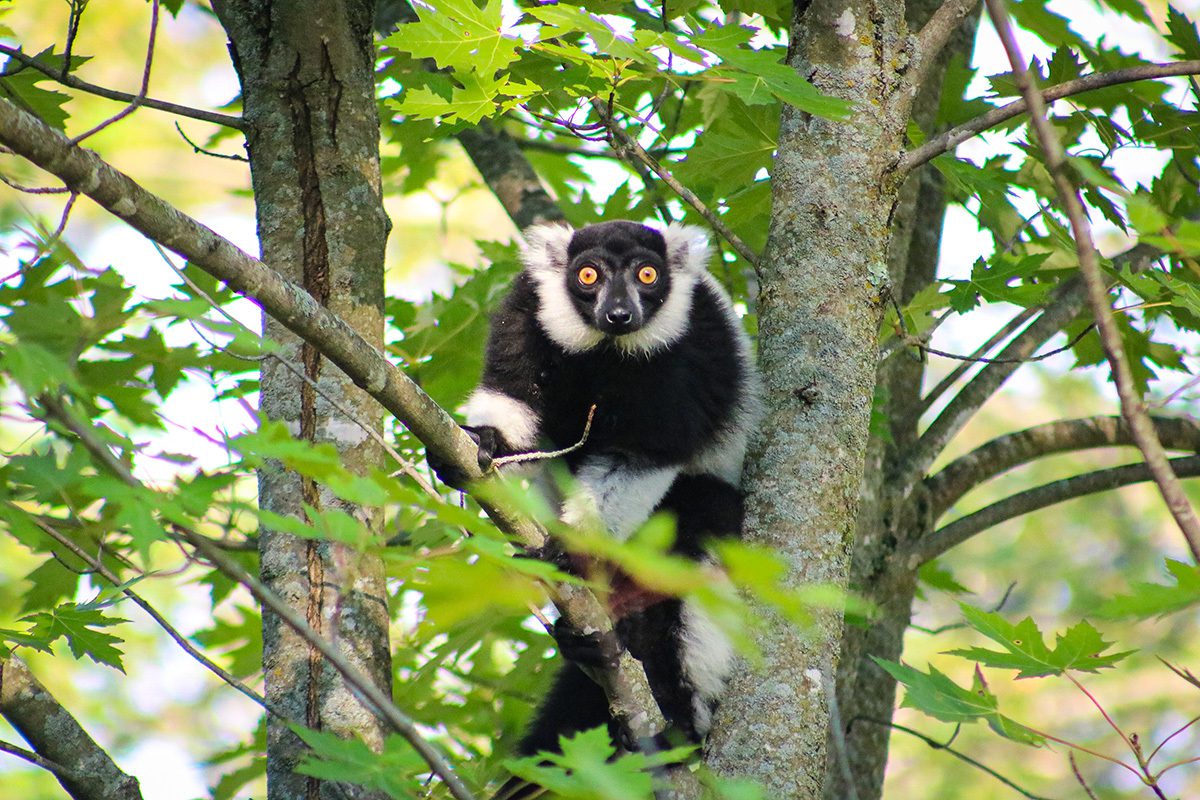

Un tour de force réussi pour réunir le couple au Zoo!
It took several months of planning to organize the transfer of these two primates to the Zoo. Ripley, the female, came to us from the Duke Lemur Center in North Carolina, while Ziggy arrived from the San Antonio Zoo in Texas.
The real feat, achieved thanks to the collaboration of all involved parties, including our transport partner Air Canada Cargo, was securing all the green lights (read: permits, authorizations, veterinary test results, etc.) and managing to land both animals within less than an hour of each other on the same day!
This allowed them to begin their quarantine period together. While the process was logistically complex, it was highly beneficial from an animal welfare perspective, as the two could experience the required 90-day (federally mandated) quarantine side by side.

A gradual and carefully monitored introduction
Now that the two lemurs are considered “permanent residents,” our animal care technicians have been able to move them into their new quarters and begin the introduction process with the Zoo’s two resident ring-tailed lemurs.
While there’s strong potential for these groups to get along well, the introductions are being done gradually, with protected contact (through mesh barriers) and at a pace that respects the comfort level of each individual.
In the meantime, Ziggy and Ripley are also discovering their outdoor habitat, alternating access with the ring-tailed lemurs.
These are critical steps that allow the newcomers to establish their bearings and slowly become accustomed to the current residents. In the wild, caution is one of the most valuable survival tools for many species, it helps them stay alive.
Curiosity, on the other hand, drives them to explore, seek out new resources, and expand their territory. Our lemurs are adapting to their new environment through a healthy mix of both instincts.
Who are black-and-white ruffed lemurs?
All of the roughly one hundred lemur species found in the world are, without exception, endemic to the island of Madagascar, located off the coast of Africa.
One of the first things you’ll notice when comparing black-and-white ruffed lemurs to the more familiar ring-tailed lemurs is their size: ruffed lemurs are among the largest of all lemur species, with a body length of up to 60 cm (plus another 60 cm for the tail) and a weight of up to 4 kg. Ring-tailed lemurs, in contrast, rarely exceed one meter in total length, including the tail and typically weigh under 3 kg.
Beyond size and weight, the two species are easily distinguished by their coat: as the name suggests, the black-and-white ruffed lemur has dense, thick fur in striking black and white patterns.
The ring-tailed lemur has shorter, usually gray fur that may be tinged with reddish tones, a white belly, and a long tail marked with alternating black and white rings. Even if you’re not a lemur expert, you’ll have no trouble telling them apart when they’re together! 😉
A natural habitat heavily impacted by human activity
The term critically endangered is chilling, it refers to an extremely high risk of extinction in the wild, the most severe conservation status a species can receive.
Confined to Madagascar, black-and-white ruffed lemur populations face numerous threats, the most significant being large-scale habitat destruction. It’s estimated that over 80% of the island’s natural environments have been lost to agriculture, forestry, and mining activities.
Being entrusted with two such precious individuals is a great responsibility, one that inspires and motivates our entire animal care team. Brought together under recommendations from the Species Survival Plan (SSP), Ziggy and Ripley now have the chance to contribute to efforts aimed at reducing the species' risk of extinction. All that’s left is to cross our fingers and hope that a little bit of magic happens between the two!
